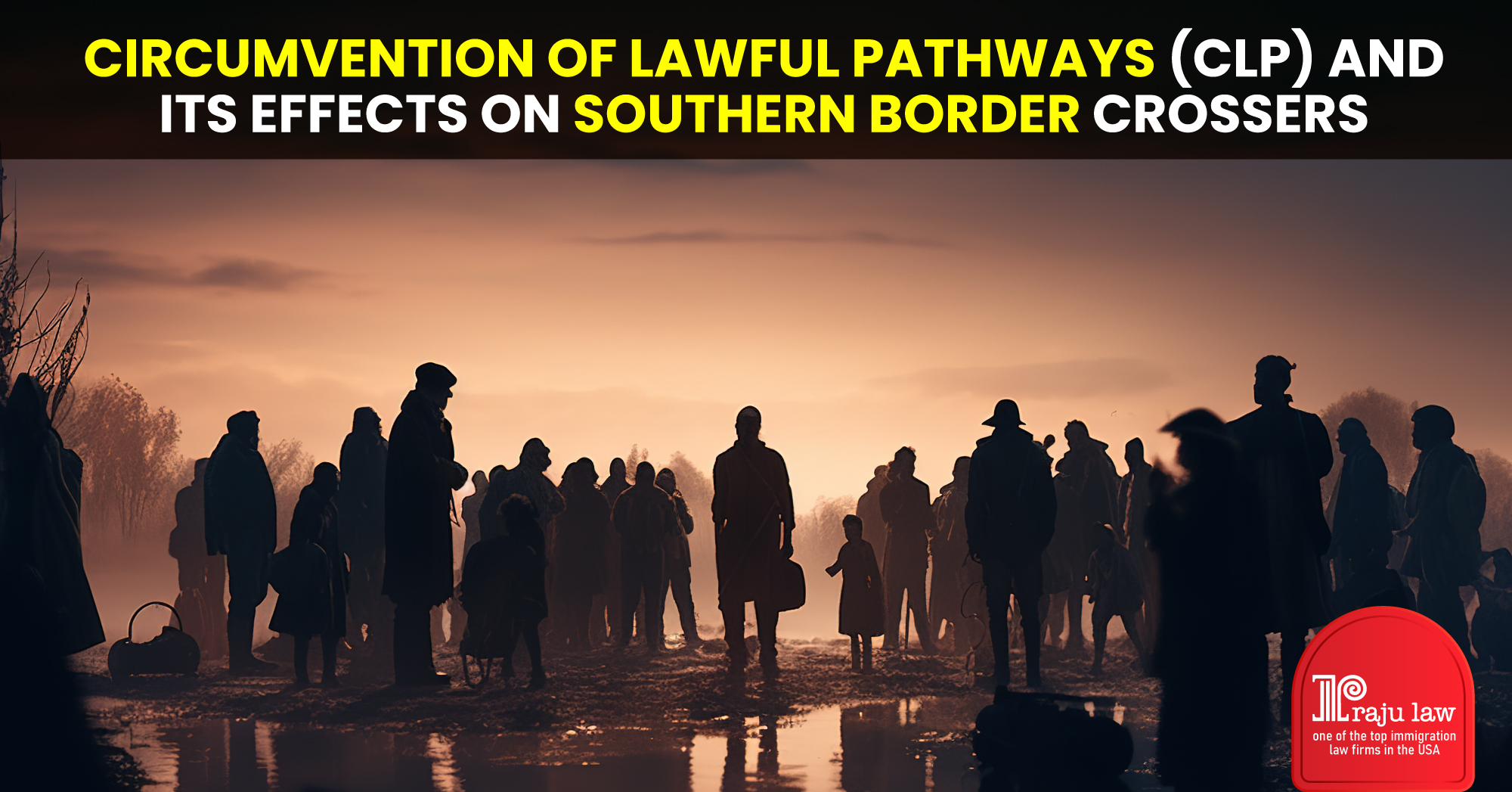Overview
A major change to US asylum policy was made on May 11, 2023 with the introduction of the Circumvention of Lawful Pathways (CLP) Rule by the Biden Administration. By promoting legitimate immigration into the country, this regulation seeks to manage and lessen the difficulties associated with large migration rates. Even though the rule aims to create order at the borders, several legal and humanitarian issues have been brought up by it. We will examine the main elements of the CLP Rule and how they affect asylum seekers in this blog post.
About the CLP Rule
To address migration challenges, the Biden- Harris administration issued the CLP rule According to which, unless they satisfy certain requirements, noncitizens who unlawfully cross the nearby coastal borders or the southwest land boundary of the United States are not eligible for asylum. There are certain extremely compelling instances in which this “Presumption of Ineligibility” can be refuted, adding levels of difficulty to an already difficult procedure for asylum seekers.
Existing Permission to Enter
Some Asylum seekers may have existing permission to travel to the U.S. This permission may have been sought through a parole process approved by the Department of Homeland Security (DHS). Moreover, the DHS has introduced Targeted Parole Programs for specific nationalities which allows them to enter the U.S. in an orderly manner. However, these pathways are restricted to a limited number of migrants and not accessible by all.
CBP One Appointment
The CLP regulation encourages people to enter the country through legal, secure, and well-organized channels. In order to expedite the procedure and decrease unapproved border crossings, asylum applicants are advised to make an appointment via the CBP One smartphone app. The CBP One mobile app, used by the Federal Agency responsible for border enforcement, allows migrants to pre-schedule asylum processing appointments. Asylum-seekers who arrive at ports of entry without having a previously scheduled appointment through the app are considered ineligible for asylum. In addition, those who are unable to prove that it was not possible to access or use the application due to severe technical issues, illiteracy, language hurdles, or other pressing issues, are also presumed ineligible for asylum. However, according to the recent Interim Final Rule that was released on June 4, 2024, failure to set an appointment due to technical difficulties with the app, illiteracy and language hurdles may no longer satisfy the requirements for being eligible for Asylum. Moreover, the new interim rule adds more restrictions for applicants crossing the southwest or nearby coastal borders in their relief applications.
Denied Protection Elsewhere
A migrant who received a final denial decision for asylum in a transit country, will fall under the exception to the presumption. In other words, if asylum seekers, passing through other countries, have sought for protection in those countries and have been denied, they may still be eligible for asylum in the U.S. under this exception.
Rebuttal of the Presumption
Apart from the exceptions, there are certain other Rebuttals to the Presumption of Ineligibility. Those are:
Person, or an accompanied family member, with an acute medical emergency;
Person facing immediate threat to their life or safety, such as threat of rape, kidnapping, torture or murder;
Person satisfying the definition of “Victim of a severe form of trafficking in persons” provided in 8 CFR 214.11;
Unaccompanied children;
Time Limit for Rule Prevalence
The ineligibility presumptions imposed by the CLP rule applies during a 24-months period after the rule’s effective date and is designed to respond to the lifting of the Title 42 Public Health Order. The time period is also subject to potential review for extension or modification.
Critical Evaluation
Legal experts and a number of advocacy groups have sharply criticized the rule. There has been legal scrutiny of the CLP Rule. A lower court’s order nullifying the rule was stayed by the U.S. Court of Appeals for the Ninth Circuit, permitting it to stay in force in the interim while the legal process is ongoing. The U.S. Conference of Catholic Bishops (USCCB) and other organizations have expressed disapproval of the rule, citing possible violations of international refugee laws. They contend that it violates the rights of people seeking refuge, especially those who are escaping life-threatening circumstances and might not be able to do so in countries of transit. In order to promote lawful admission, the Department of Homeland Security (DHS) has put in place a number of initiatives, such as introducing parole procedures for urgent humanitarian needs and increasing refugee processing.
As a result of the implementation of this rule, establishing eligibility has become more difficult for asylum seekers. For people escaping perilous situations, the obligation to petition for asylum in other countries before arriving in the United States can be especially difficult. During credible fear interviews, asylum officers are required to determine whether interviewees fulfill the exceptions or can refute the assumption of ineligibility. This makes the asylum procedure much more complicated. The regulation places stringent requirements on qualifying for asylum in an effort to discourage irregular migration. This could cause a change in migratory behavior, favoring legal routes over unauthorized arrival.
Conclusion
The CLP Rule, which emphasizes the adoption of legal entrance procedures and places strict limits for individuals who enter illegally, marks a fundamental change in U.S. asylum policy. Although its goal is to better manage migration, it also brings up important legal and humanitarian issues. As the regulation continues to encounter legal challenges and operational modifications, its long-term effects on asylum seekers and the larger immigration picture will become more evident. The way that American immigration policy is changing emphasizes the necessity of thorough reform to deal with the many and varied issues at the southern border.

